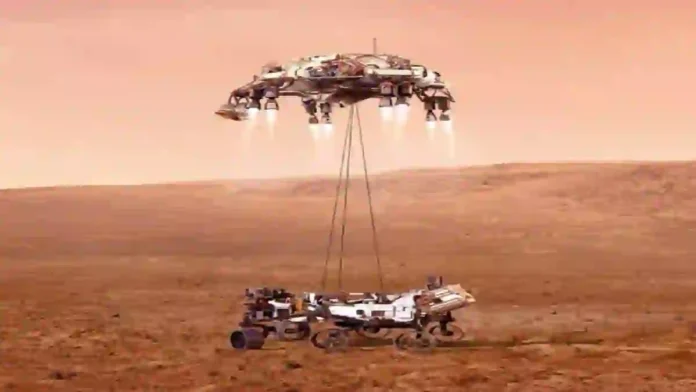ISRO has unveiled its plans for Mangalyaan-2, the nation’s next Mars mission. Building upon the success of the Mars Orbiter Mission (MOM), or Mangalyaan, this ambitious endeavour promises to push the boundaries of India’s space exploration capabilities.
Mangalyaan-2 will feature a combination of a rover and a helicopter, mirroring the innovative approach employed by NASA’s Perseverance rover and the Ingenuity helicopter.
ISRO’s engineers are currently working on developing cutting-edge technologies, such as a supersonic parachute and a sky-crane, to ensure a safe and precise deployment of the rover on the Martian surface. These two components will be used for a safe and stable descent of the rover during landing.
According to India Today, the revelations were made during a presentation on National Technology Day at the Space Application Centre last week.
The mission’s launch will be facilitated by India’s heaviest rocket – the Launch Vehicle Mark-III (LVM3).
Read- HOW NEW TEJAS FIGHTER JET VARIANT IS DIFFERENT FROM ITS PREDECESSOR
One of the most intriguing aspects of Mangalyaan-2 is the inclusion of a Unmanned Aerial Vehicle (UAV), that will carry ‘Marble’ or the ‘Martian Boundary Layer Explorer.’ This aerial vehicle will soar up to 100 meters above the Martian surface and profile the planet’s atmosphere with unprecedented detail.
ISRO is also planning to deploy a dedicated relay communication satellite ahead of the mission’s launch to ensure seamless communication between the mission and Earth.
This satellite, launched aboard the Polar Satellite Launch Vehicle (PSLV), will act as a crucial link, facilitating uninterrupted and efficient data transfer between Mars and Earth
ISRO’s journey to Mars began with the Mars Orbiter Mission (MOM), or Mangalyaan, which was launched on November 5, 2013. Designed for a lifespan of just six months, the orbiter defied expectations and continued to operate for an impressive eight years around Mars, until ISRO lost contact with it in 2022.
(With Agency Inputs)




